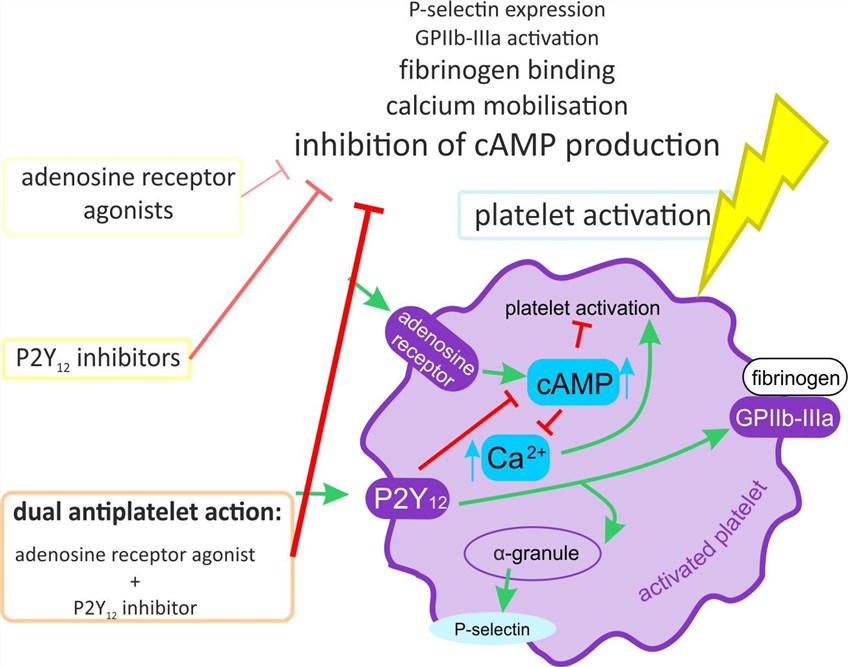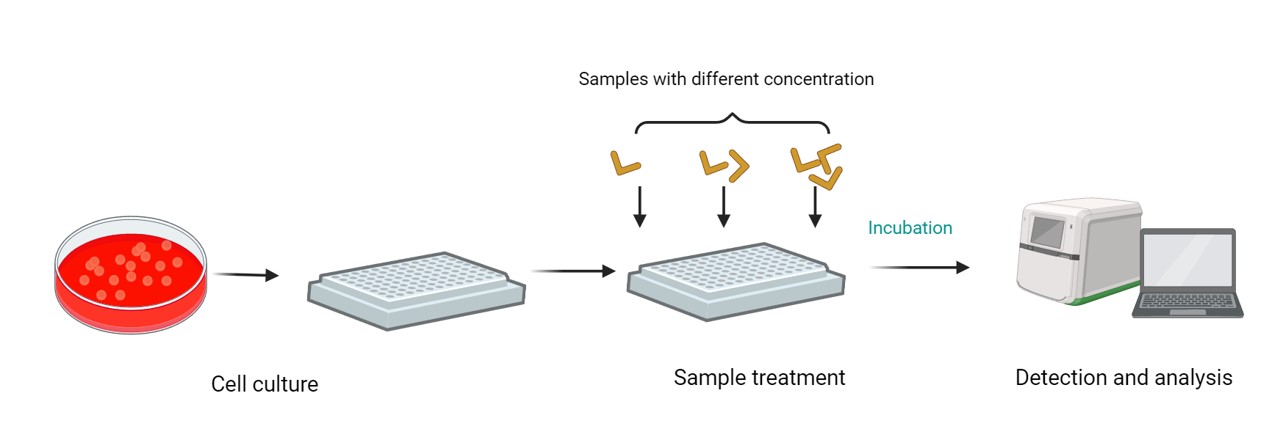Hi-Affi™ In Vitro Cell based Adenosine Receptor Functional Assay Service
Adenosine Receptors with Future
Adenosine receptors (ARs) are a class of GPCRs that consist of four subtypes: A1, A2A, A2B, and A3. These receptors play a crucial role in mediating the physiological actions of adenosine. They are broadly identified in practically all human body tissues and organs, as well as their expression patterns vary among different cells, providing strength to the notion that they could potentially serve as both pathological indicators and unexpectedly pharmacological targets. Consequently, comprehending the function of adenosine receptors will boost their applications in drug development of diseases.
Our Hi-Affi™ In Vitro Cell-based Adenosine Receptor Functional Assay Service
Creative Biolabs provides a cost-effective Hi-Affi™ in vitro cell-based adenosine receptor functional assay service to assist global customers in comprehending the function of adenosine receptors better. Our Hi-Affi™ in vitro cell-based adenosine receptor functional assay service is carried out by spotting the accumulation of cAMP in response to an increase in cAMP following the combination of adenosine receptors with the G protein.
 Fig.1 Adenosine receptor agonists inhibit cAMP production to regulate physiological activity.1,3
Fig.1 Adenosine receptor agonists inhibit cAMP production to regulate physiological activity.1,3
Workflow
Creative Biolabs provides extensively customized services covering cell culture to results analysis for global customers' projects implemented smoothly. Presented here is a simple workflow of our Hi-Affi™ in vitro cell-based adenosine receptor functional assay service.

Benefit for you
-
Multiple types of cell lines aid our Hi-Affi™ in vitro cell-based adenosine receptor functional assay service.
We provide numerous range of stable expressing cell lines including but not limited to human leukemia Jurkat T cells, human melanoma A375 cell lines, MCF-7 human breast cancer cells, U87MG human glioblastoma cells, DLD-1 colon carcinoma cells, SH-SY5Y neuroblastoma cells, etc., to choose from for global customers' projects.

-
Reliable and reputable experiment systems empower our Hi-Affi™ in vitro cell-based adenosine receptor functional assay service.
Our Hi-Affi™ in vitro cell-based adenosine receptor functional assay is simple and easy to operate, which requires a few steps. -
A competent research team guarantees our Hi-Affi™ in vitro cell-based adenosine receptor functional assay service.
Our research team features a group of specialists with extensive professional training, practical experience, and expertise, which together with state-of-the-art technologies make us confident in presenting high-quality data to global customers. -
Comprehensive customized services assure our top-ranking Hi-Affi™ in vitro cell-based adenosine receptor functional assay service.
We offer a comprehensive and customized Hi-Affi™ in vitro cell-based adenosine receptor functional assay service, covering everything from sample processing to data visualization with cutting-edge technology to ensure that you can achieve idealist outcomes for your projects.
Data Display
Summary: This study explores the role of adenosine as an immunosuppressive agent that hinders the function of various immune cells, particularly T cells, by engaging the adenosine A2A receptor (A2AR). This action typically restricts the immune system's ability to combat tumors. Researchers utilized murine and human chimeric antigen receptor (CAR) T cells to illustrate that disrupting A2AR through a gene-editing approach with clinical potential significantly boosts these cells' effectiveness in living organisms, subsequently enhancing survival rates in mice. Given that A2AR activation results in increased levels of cAMP, the signaling molecule that mediates its inhibitory effects, the study assessed the impact of A2AR knockdown by measuring cAMP levels following NECA stimulation, underscoring the receptor's critical role.
 Fig.2 The evaluation of cAMP level induced by A2AR knockdown.2,3
Fig.2 The evaluation of cAMP level induced by A2AR knockdown.2,3
Work with Creative Biolabs

For more details about our Hi-Affi™ in vitro cell-based adenosine receptor functional assay service, please feel free to contact us.
Frequently Asked Questions
Q1: What does the binding of adenosine to its receptors result in?
A1: When adenosine attaches to its receptors, brain activity slows and you experience sleepiness. Adenosine, therefore, promotes sleep and dilates blood vessels, most likely to ensure enough oxygenation while sleeping. Caffeine inhibits the adenosine receptor.References
- Wolska, Nina, et al. "Adenosine receptor agonists increase the inhibition of platelet function by P2Y12 antagonists in a cAMP-and calcium-dependent manner." Pharmaceuticals 13.8 (2020): 177.
- Giuffrida, Lauren, et al. "CRISPR/Cas9 mediated deletion of the adenosine A2A receptor enhances CAR T cell efficacy." Nature Communications 12.1 (2021): 3236.
- Distributed under Open Access License CC BY 4.0, without modification.
For Research Use Only.
